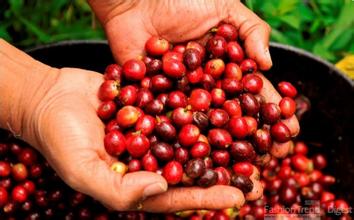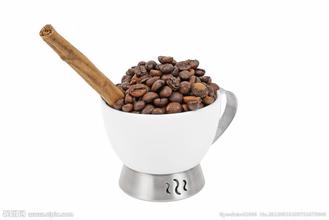Characteristics of Colombian coffee beans A brief introduction to the varieties of manor produced by grinding scale flavor treatment method
Characteristics of Colombian coffee beans A brief introduction to the varieties of manor produced by grinding scale flavor treatment method
Coffee cultivation in Colombia is mostly small farm planting, with an average of about 3000 coffee trees per coffee farm, mostly using mixed three-dimensional planting, that is, planting trees, bananas and other vegetation around coffee trees during the coffee tree seedling period. provide a cool and humid environment for the production of coffee trees
Coffee workers go up the mountain to pick coffee beans (also known as coffee cherries) by hand, so they can pick carefully and pick the most ripe and full fruits. The vast majority of Colombian coffee beans are water-washed and moderately roasted with a light silky and sometimes sour taste, which is not as strong as Brazilian coffee and Italian Expresso and is known as "green gold".
Colombian coffee-origin quality Colombian coffee Colombian coffee
No matter in terms of yield or texture, Colombian coffee is first produced by Medellin, which is characterized by full granules, rich nutrition, moderate acidity, good balance, rich aroma and soft taste. In addition to Medellin, the capitals of two neighboring provinces in the south, Armenia and Manizales, are also famous coffee producers, which formerly belonged to Medellin's province of Andiquio, which had a Caldas football team that played in the last Toyota Cup. These three places have formed the world-famous "coffee zone".
One of the more plausible theories about the timing of coffee cultivation in Colombia is that coffee trees were brought into Colombia by missionaries in 1723 (beside the point: coffee is spread by missionaries in many parts of the world, such as Yunnan). However, the rapid development of coffee cultivation in Colombia was at the end of the 19th century, when coffee was grown rapidly as a commodity crop in Colombia. By 1912, coffee beans had become Colombia's largest export commodity, accounting for about 50% of Colombia's total exports.

Important Notice :
前街咖啡 FrontStreet Coffee has moved to new addredd:
FrontStreet Coffee Address: 315,Donghua East Road,GuangZhou
Tel:020 38364473
- Prev

Description of characteristics and Flavor of Coffee Bean treatment in Kenya A brief introduction to manors in varieties producing areas
A brief introduction to Kenyan Coffee Bean processing characteristics Flavor description Variety region Manor Kenyan Coffee has become more famous with the sensation of the Hollywood movie "OutofAfrica". Karen, the heroine played by Meryl Streep (MarylStreep), is a writer and coffee plantation owner. Many people probably still remember the beautiful scenery and magnificent day in the film.
- Next

Brief introduction of Colombian Huilan Coffee Variety Flavor description Taste treatment Grinding Calibration Variety
Introduction to Colombian Huilan Coffee Variety Flavor description method Grinding scale varieties Colombia spans the northern and southern hemispheres, the coffee producing areas of the country are mostly located between 2 and 8 degrees north latitude, and the coffee producing areas are concentrated in the areas of Sanchuan and Liangliang Rivers, that is, the part of the Andes (Cordillera Mountains) in Colombia, where Colombia's rivers almost originate from the Andes. Okay, coffee producing area.
Related
- Detailed explanation of Jadeite planting Land in Panamanian Jadeite Manor introduction to the grading system of Jadeite competitive bidding, Red bid, Green bid and Rose Summer
- Story of Coffee planting in Brenka region of Costa Rica Stonehenge Manor anaerobic heavy honey treatment of flavor mouth
- What's on the barrel of Blue Mountain Coffee beans?
- Can American coffee also pull flowers? How to use hot American style to pull out a good-looking pattern?
- Can you make a cold extract with coffee beans? What is the right proportion for cold-extracted coffee formula?
- Indonesian PWN Gold Mandrine Coffee Origin Features Flavor How to Chong? Mandolin coffee is American.
- A brief introduction to the flavor characteristics of Brazilian yellow bourbon coffee beans
- What is the effect of different water quality on the flavor of cold-extracted coffee? What kind of water is best for brewing coffee?
- Why do you think of Rose Summer whenever you mention Panamanian coffee?
- Introduction to the characteristics of authentic blue mountain coffee bean producing areas? What is the CIB Coffee Authority in Jamaica?

